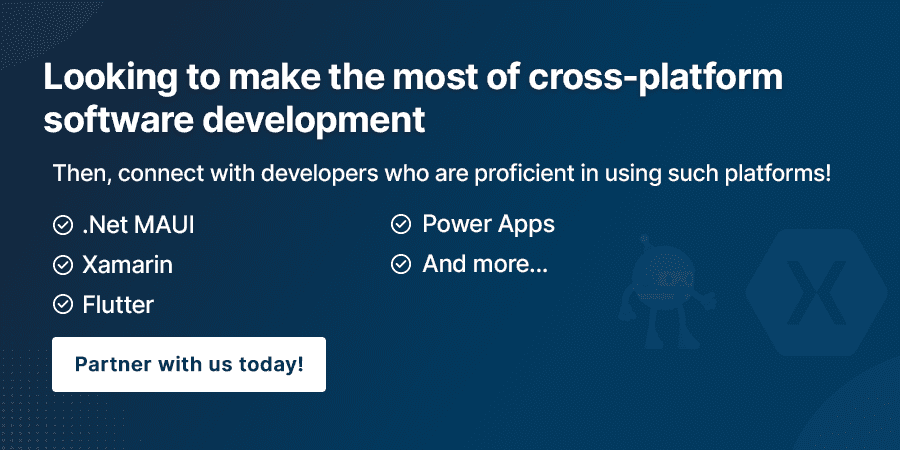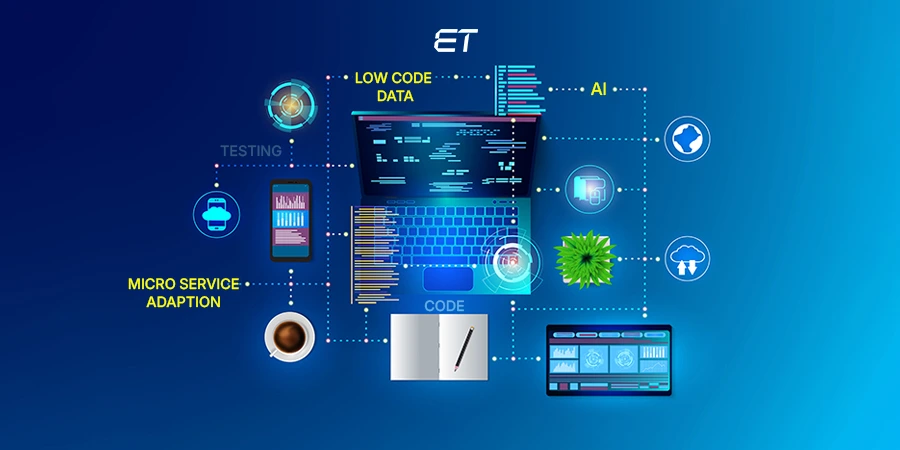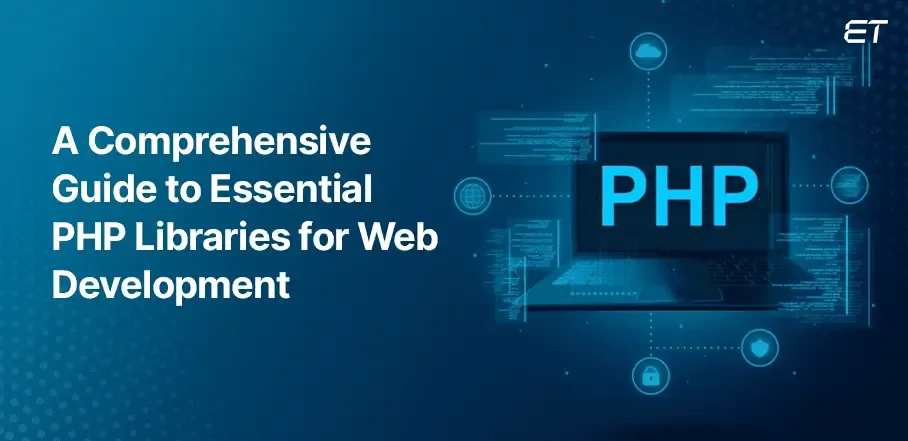
.NET MAUI vs Xamarin: Which is Best for your Project?
Finally, Xamarin has been superseded by the late-arriving .NET MAUI in Visual Studio 2022! (Source)
Microsoft refers to.NET MAUI as the progression of the mobile-focused Xamarin.Forms since it offers the ability to create desktop applications. However, several variables determine whether you should move from Xamarin to .NET MAUI. Read this blog thoroughly; it covers a comparative analysis of .NET MAUI vs Xamarin.
Xamarin has been a vital component of the mobile app development industry for more than ten years. Xamarin.Android and Xamarin.iOS were included in .NET 6 under the names .NET for Android and .NET for iOS.
These bindings are projections of the SDKs that Google and Apple ship; nothing changes there, but updated build tooling, target framework monikers, and runtime framework monikers will match all other .NET 6 and .NET 7 workloads.
It seems that MAUI is going to replace Xamarin in the near future. But is that a modification for the better or worse? Seeing how things work out will be interesting.
Given that Xamarin.Forms is the enhanced and evolved version of .NET Multi-platform App UI, but if we compare .NET MAUI VS Xamarin, there are many similarities between them. Almost all of Xamarin’s features, such as layouts, gestures, controls, templates, Shell, and cross-platform APIs, are available in .NET MAUI. With a separate namespace.
Nevertheless, despite their many similarities, Xamarin vs .NET MAUI are not the same. In this post, we will compare Xamarin vs. NET MAUI in depth, examining their key characteristics as well as their shared and distinct features.
We are sure that after reading this blog, you’ll be able to select the best framework for your upcoming cross-platform app development project.
Confused between .NET MAUI and Xamarin? Connect with us for expert guidance to make the right choice!
Overview of .NET MAUI
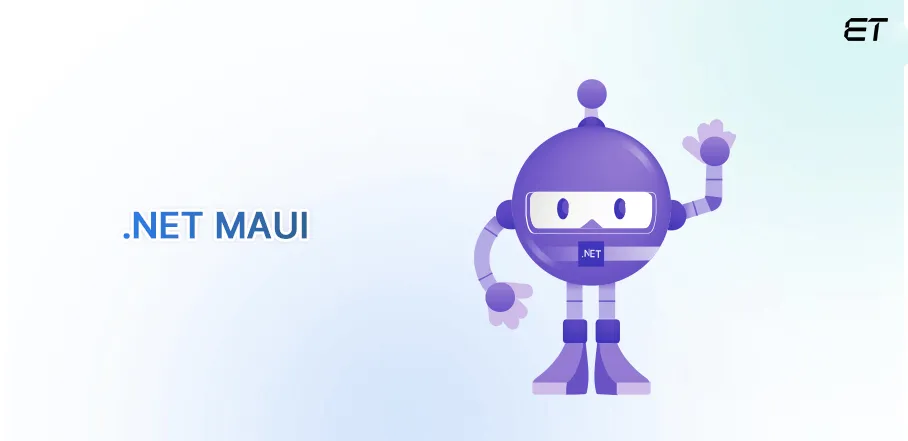
The term “.NET MAUI” refers to the .NET Multi-platform App UI. Dedicated .NET developers can use this framework to develop native cross-platform apps for Windows, iOS, Android, and macOS. With .NET MAUI, developers can create intuitive, responsive user interfaces and leverage the power of C# and XAML to streamline mobile app development, making it an efficient and versatile choice for cross-platform projects.
Ready to master cross-platform development? Read our beginner’s guide to .NET MAUI and level up your skills!
Did you know reaching a larger audience is made easier for developers by the ability to create UWP apps with the same ease as their mobile counterparts?
More customization possibilities for UWP apps are made possible by.NET MAUI, allowing developers to create distinctive user experiences on Windows devices. Additionally, this framework offers a more uniform API, which facilitates the creation of cross-platform applications with less code.
Here’s an in-depth look at its key features and capabilities
Features of .NET MAUI
| Feature | Explanation |
| XAML for UI | Developers can use XAML, an expressive markup language, to design and define the user interface. Therefore, it is easier to create complex layouts, styles, and interactive elements. |
| MVVM Support | The framework supports the Model-View-ViewModel (MVVM) architectural pattern, promoting a clear separation of concerns and making it easier to manage complex application logic. |
| .NET Ecosystem Integration | Leveraging the extensive .NET ecosystem, developers can use C# for the app’s business logic and access a wide range of libraries and tools, including those for data access, networking, and more. |
| Dependency Injection | The framework includes a built-in dependency injection system, making it easier to manage app services and components and facilitating the use of best practices. |
| Native User Interfaces | It provides the ability to create native, platform-specific user interfaces, ensuring that apps look and feel native on each platform, contributing to a superior user experience. |
Overview of Xamarin
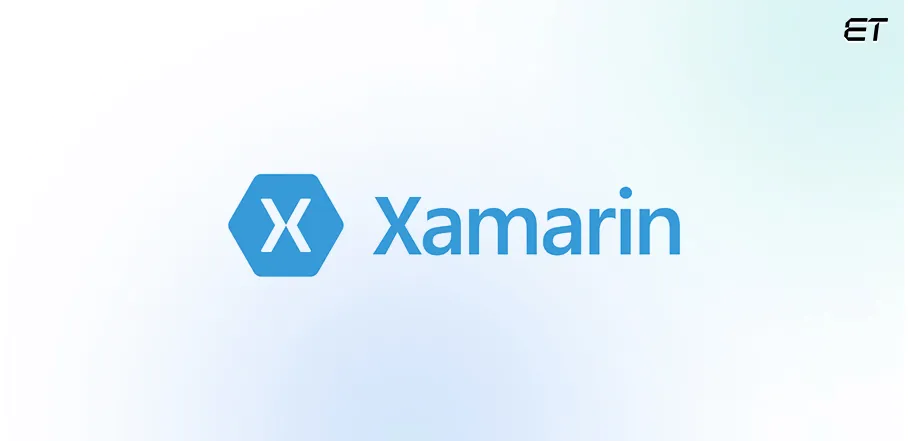
Xamarin is a development framework that was created in 2011 and uses the C# programming language. Microsoft acquired Xamarin in 2016, along with the corresponding SDK. Xamarin consequently moved to the open-source MIT license and was integrated into Microsoft Visual Studio.
Strong and extensively used, Xamarin is a well-known framework for its cross-platform functionality. Using a common codebase, it enables developers to create native applications for Windows, iOS, and Android. With the range of pre-built pages, layouts, and controls it offers, dedicated developers can design a user interface for their apps that is both responsive and visually appealing.
Features of Xamarin
| Feature | Explanation |
| Modern IDE | For Mac OS X and Windows, Xamarin utilizes Visual Studio and Xamarin Studio. These are two modern IDEs with features like integrated source control, project and solution management, code auto-completion, and a vast project template library. |
| Amazing Base Class Library | The .NET BCL, a vast collection of classes with robust and efficient features like powerful XML, database, serialization, IO, string, and networking support, is used by Xamarin applications. |
| Native Multi-Platform Support | Xamarin includes support for multiple forms. Indeed, developers have complete access to native tools and APIs for Android, iOS, and Windows. As a result, Xamarin provides your business application with performance-driven features and a native user interface. |
| Azure Integration | Xamarin is tightly integrated with Microsoft Azure, enabling cloud-based services and solutions to be seamlessly incorporated into apps. |
| Complete Binding | For almost all of the underlying platform SDKs on both iOS and Android, Xamarin has bindings. Furthermore, these bindings are strongly-typed, making them simple to use and navigate while offering reliable type-checking during development and compile time. |
Exploring the Differences: .NET MAUI vs Xamarin
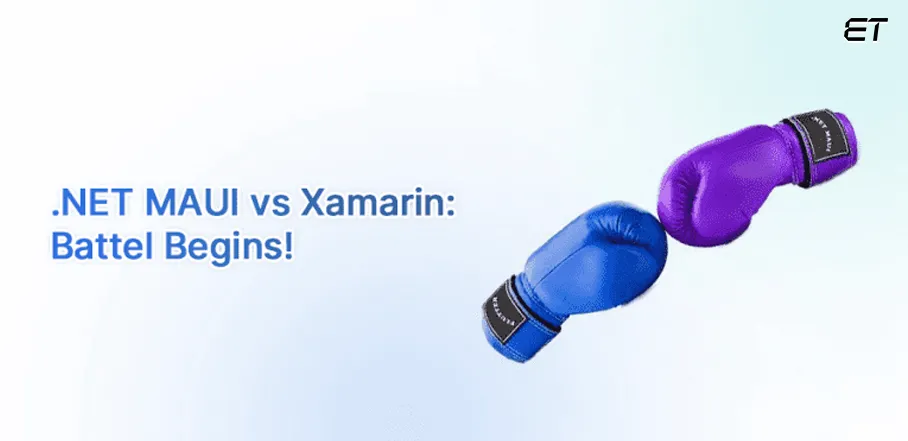
To assist you in choosing the best framework for you, let’s examine .NET MAUI VS Xamarin in more detail.
-
Development Environment

.NET MAUI and Xamarin share the same development environment, primarily Visual Studio, which offers a comprehensive Integrated Development Environment (IDE) for cross-platform app development. Visual Studio for Windows and Visual Studio for Mac support both frameworks, providing a familiar, efficient, and consistent environment for developers to create mobile applications.
When it comes to.NET MAUI vs. Xamarin, Visual Studio or Visual Studio for Mac can be used to develop.NET MAUI applications without the need for any extra extensions or tools. On the other hand, in order to develop apps using Xamarin.Forms, Visual Studio or Xamarin Studio must be installed.
-
Support for .NET 6

Although Xamarin is .NET Core 3.1, .NET Multi-platform App UI is integrated into .NET 6. You can now utilize the new C#10 and .NET 6 features in MAUI for your enterprise development due to its support for .NET 6.
When we compared Xamarin vs .NET MAUI, dedicated developers are encouraged to migrate to .NET MAUI for building desktop and mobile apps with a unified codebase, taking advantage of the latest .NET features and enhancements.
Are you ready for scalable, high-performance solutions? Know why .NET is the future of enterprise app development!
-
Blazor

Microsoft’s Blazor web framework facilitates server-side, client-side, and WebAssembly-based development by enabling programmers to create interactive web applications with C# and.NET.
.NET MAUI offers more straightforward integration with Blazor for cross-platform app development, while in Xamarin, it’s possible but requires additional effort.
.NET MAUI has a BlazorWebView control that allows you to integrate Blazor web components into your mobile and desktop apps. Xamarin, on the other hand, traditionally focused on native UI development and didn’t have native support for Blazor integration.
Want to connect with .NET developers who can offer personalized assistance? Choose our agile team now!
-
Supported Platforms and Versions

The primary distinction in Xamarin vs .NET MAUI’s platform support is how well they handle Windows. While.NET MAUI supports WinUI, Xamarin supports UWP. For information on support versions, see the table below.
.NET MAUI VS Xamarin
| Support | .NET MAUI | Xamarin |
| Primary Support |
|
|
| Additional Support |
|
|
-
Platform Architecture

The architecture of .NET MAUI vs Xamarin differs significantly from one another. Xamarin.Forms rely on a page-centric architecture, which builds an application’s user interface using pages, views, and controls. Platform-specific projects provide access to platform-specific features and APIs, while professional developers create a shared codebase that contains the essential business logic and UI code.
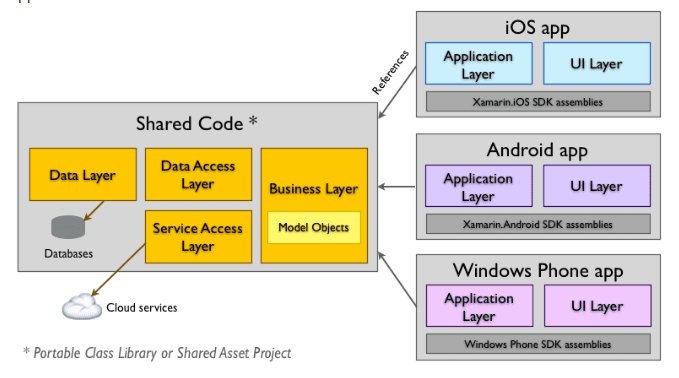
In contrast, the architecture of.NET MAUI is more adaptable since it is built around a single root view that can support several child views. This framework possesses a more unified project structure. Cross-platform code is simpler to manage and maintain because it uses a single .NET MAUI project for all platforms.

Find easy steps to convert .NET framework to .NET Core.
-
Renderer & Handler Architecture
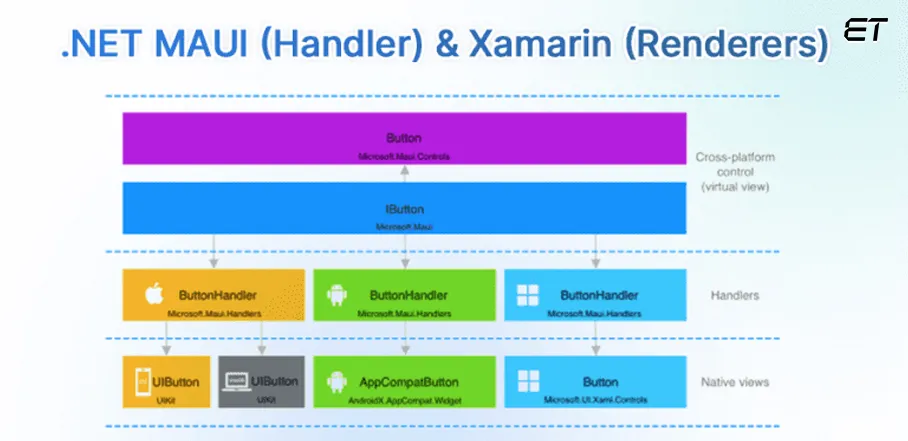
.NET MAUI employs a handler-based architecture, abstracting platform-specific UI logic via handlers, streamlining cross-platform development, and supporting modern UI features. Handlers in .NET MAUI enable more consistency and reduce the need for platform-specific code. This results in a unified development experience with .NET MAUI, simplifying the creation and maintenance of cross-platform user interfaces
Xamarin, on the other hand, relies on a renderer-based approach, using platform-specific renderers to map Xamarin.Forms represent the native platform UI. This renderer approach provides fine-grained control but may require more platform-specific adjustments.
-
Project Structure
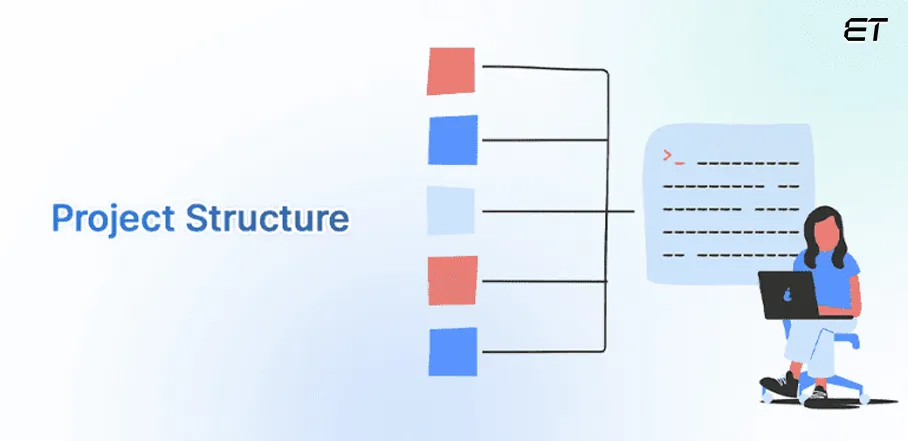
If we talk about the project structure of .NET MAUI vs Xamarin, then instead of managing several projects simultaneously, .NET MAUI employs a single project structure.
The .NET developers optimize the platform-specific features and capabilities by working on a single codebase that can be allocated to different operating systems. This frees them from worrying about details unique to a given device, so they can concentrate on writing, debugging, and optimizing the code.
On the other hand, Xamarin.Forms developers have to work with multiple projects to target multiple platforms. Organizing images, fonts, and platform-specific codes might also be a challenge for them.
By enabling developers to collaborate on a single project,.NET MAUI resolves these problems effectively and is the winner in the fight of .NET MAUI vs Xamarin in terms of project structure
Your project’s success starts with the right skills. Empower your developers with the must-know .NET expertise today!
-
Unification of Libraries
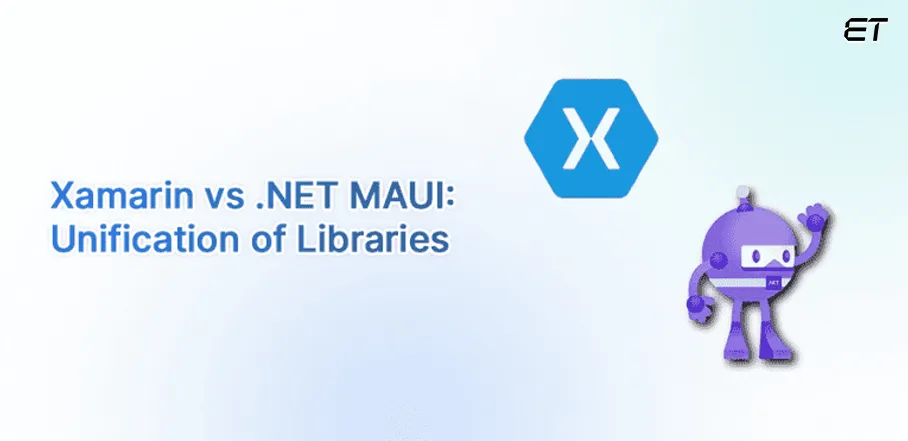
The .NET Multi-platform App UI makes it possible to combine essential libraries. Access to functions like contacts, images, device sensors, and other services, such as secure storage and authentication, are made possible by integrating the Xamarin.Essentials library into MAUI.
.NET MAUI’s design encourages a more cohesive and streamlined library integration, reducing the need for platform-specific dependencies and enhancing cross-platform code sharing. At the same time, Xamarin, especially in its earlier iterations, required more effort to attain the same level of library unification.
Xamarin, while offering cross-platform libraries like Xamarin.Essentials, historically involved a more fragmented approach, often relying on platform-specific libraries or plugins for various features.
-
Hot Reload Support

The widely used feature known as “hot reload” shortens the stages of the mobile app development cycle and makes coding easier and more efficient. With the help of this feature, developers can modify the user interface and view the results right away without having to restart the program.
With the release of Hot Reload 2.0, .NET MAUI takes things a step further. It is now possible to modify an application’s logic with this version, which facilitates code iteration for .NET developers. Full support for .NET hot reloads for C# and XAML is available in .NET MAUI.
Xamarin also has Hot Reload, but out of Xamarin vs .NET MAUI, .NET MAUI’s implementation is more tightly integrated and refined for cross-platform development.
-
Design-Time Data
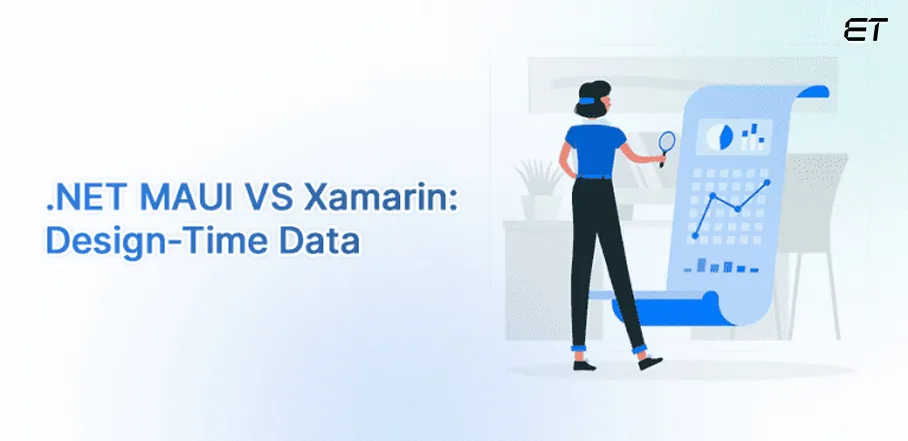
As discussed, .NET MAUI features Hot Reload, offering live design-time data for dynamic UI previews during development. Xamarin uses “sample data” in XAML, allowing mock data for design-time previews but without the same level of interactivity.
Hence .NET MAUI’s approach facilitates a more interactive and immediate design experience, while Xamarin’s “sample data” primarily serves as static placeholder content for design purposes.
Partner with Clutch-recognized .NET experts who deliver results. Hire our top-tier developers today!
-
Lifecycle Management

Out of .NET MAUI vs Xamarin, the former simplifies app lifecycle management by providing a unified approach for mobile and desktop platforms. It reduces the need for platform-specific code, allowing developers to handle lifecycle events consistently from a single codebase.
Elevate your project with ASP.NET Core best practices.
In contrast, Xamarin also supports lifecycle management but may require more platform-specific handling, given its less unified nature. .NET MAUI’s approach promotes a more streamlined and cohesive experience when dealing with app lifecycle events across different platforms, contributing to cross-platform development efficiency.
-
Resource Maintenance

.NET MAUI has evolved from Xamarin regarding resources, specifically for .NET MAUI simplifies resource maintenance with a single-project structure, allowing resources like images and localization to be managed within a unified codebase. It also provides
In contrast, Xamarin uses platform-specific resource folders, necessitating separate resource files for each platform, potentially increasing complexity.
Xamarin often relies on third-party libraries or plugins for localization and resource management. .NET MAUI’s approach offers greater resource management efficiency and consistency, benefiting cross-platform development.
-
Graphics APIs/Platform Specific APIs

There are no direct APIs available in Xamarin for drawing requirements. The only way to accomplish it is by using native renderers. With .NET MAUI, on the other hand, things are different because of its cross-platform graphics capabilities, which provide a drawing canvas for creating shapes and paintings.
Xamarin.Forms provide a collection of cross-platform APIs for Windows, iOS, and Android. Certain platform-specific APIs need custom renderers or aren’t available on all platforms.
Conversely, .NET MAUI offers a set of platform-specific interfaces that let developers directly access native functionality from every platform.
-
Performance

.NET MAUI is designed for improved performance, thanks to its handler architecture. This approach reduces rendering overhead and provides more direct access to native controls, resulting in smoother and more responsive apps.
Xamarin, while offering good performance, may experience slightly lower performance in comparison, as its renderer-based architecture introduces additional abstraction.
Confused between .NET Core and .NET Framework? Our guide makes the choice crystal clear.
When we compare .NET MAUI vs Xamarin performance issues have been raised about Xamarin, especially with Android devices. With a new rendering system that enhances performance on all platforms, .NET MAUI solves this problem and produces faster and more fluid apps.
-
Community Support

When we compare .NET MAUI vs Xamarin in terms of community support, we find both are giving tough competition. How? Let’s see!
.NET MAUI benefits from Microsoft’s strong backing, which has led to a growing community of developers and enthusiasts. It has gained significant traction since its announcement. The.NET MAUI community is expanding quickly, and new resources are being made available to aid in its adoption. Samples, documentation, and community support are increasing day by day.

Xamarin, having been around for a while, boasts a well-established community with a wealth of resources, plugins, and libraries. A wide range of resources are available, including libraries, forums, and tutorials. Globally, seasoned Xamarin developers are available to assist and mentor developers.

-
Compatibility & Migration

Compatibility and migration between .NET MAUI and Xamarin can be a mixed bag. .NET MAUI is designed as an evolution of Xamarin, making it relatively seamless for Xamarin.Forms projects to migrate to .NET MAUI.
However, .NET MAUI introduces some breaking changes, requiring developers to update their code. Xamarin.Forms projects may require some modifications to align with .NET MAUI’s architecture. For older Xamarin.Native projects, migration may be more complex, involving significant code rewrites. It’s crucial to assess the specific project and requirements to determine the feasibility and effort needed for migration, considering the potential benefits of the newer .NET MAUI framework.
.NET MAUI vs Xamarin: Pros and Cons

Find the strengths and weaknesses of .NET MAUI.
| Pros of .NET MAUI | Cons of .NET MAUI |
| Single codebase for multiple platforms (Android, iOS, macOS, Windows). | Developers new to .NET may face a learning curve. |
| Enhanced UI controls and flexibility for creating native-like experiences. | As a relatively new framework, it may have some initial issues or limited third-party libraries. |
| Real-time code and UI updates for faster development and debugging. | Migrating from Xamarin.Forms may require effort and adjustments |
| Fully integrates with .NET 6, leveraging the extensive .NET ecosystem. | Handling platform-specific differences can still be necessary. |
| Positioned as the future of cross-platform .NET development | Some tooling and extensions may still be in development. |
Find the strengths and weaknesses of Xamarin.
| Pros of Xamarin | Cons of Xamarin |
| Shared codebase across platforms reduces development time and maintenance efforts. | Requires a Xamarin license for certain enterprise features. |
| Xamarin offers extensive libraries, plugins, and community support. | It may not immediately support new platform features. |
| Microsoft’s ownership ensures regular updates and improvements. | Slight performance differences compared to fully native apps. |
| Xamarin allows for the development of cross-platform apps with a native look and feel. | Developers new to Xamarin may face a learning curve. |
| Xamarin.Essentials provides cross-platform APIs for device features. | Certain features or optimizations may require platform-specific code. |
Final Verdict
The growing popularity of cross-platform application development is due to lower costs and a faster time to market.
The two robust cross-platform framework- .NET MAUI and Xamarin are the talk of the town! After reading this blog, you can better comprehend .NET MAUI vs Xamarin, who is the winner?
An upgraded version of Xamarin, .NET MAUI provides a unified framework for creating cross-platform applications. It has simplified development, improved UI controls, and uses a single codebase for Windows, macOS, iOS, and Android.
Though mature, Xamarin primarily focuses on mobile apps and may require more platform-specific code. That’s why it is moving towards MAUI.
Therefore, .NET MAUI is the better option for future-proof cross-platform development and offers a more efficient and modern approach. However, Xamarin is still a good option in some situations.
If you have to pick one (.NET MAUI vs Xamarin), determine which is the best fit by first understanding the requirements of your project and considering the advantages of both technologies!
Our dedicated development team can assist you in choosing the best technology by leveraging its expertise, staying updated on industry trends, and assessing project requirements. They evaluate factors like scalability, budget, and project goals, guiding clients to select the most suitable technology stack for optimal performance, cost-efficiency, and future-proofing.
Let us understand what your project needs!
Unlock unparalleled expertise in .NET development with us. Connect now for bespoke solutions tailored to your business.
Frequently Asked Question
.NET MAUI vs Xamain: which is best in security?
Xamarin vs .NET MAUI share similar security capabilities, as both are based on .NET framework. Security largely depends on how well developers implement best practices and adhere to security guidelines. Therefore, the choice between them doesn’t significantly impact security; it’s more about the developer’s approach and the specific security measures implemented.
Can I easily migrate from Xamarin to .NET MAUI?
Migrating from Xamarin to .NET MAUI can be straightforward for Xamarin.Forms projects, thanks to .NET MAUI’s evolution. However, it may require adjustments due to architectural changes. For older Xamarin.Native project migration can be more complex and time-consuming, involving code rewrites and significant effort.
Is my Xamarin code reusable in Maui?
Yes, Xamarin code, specifically Xamarin.Forms, is highly reusable in .NET MAUI. .NET MAUI is designed as an evolution of Xamarin.Forms, allowing developers to migrate existing code with minimal modifications easily.


